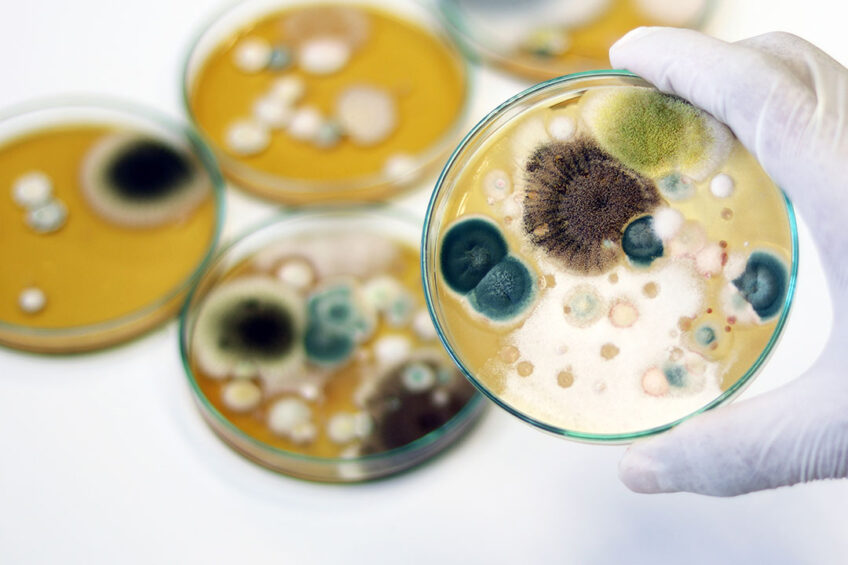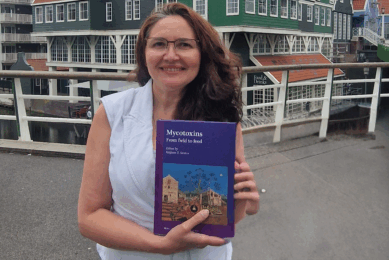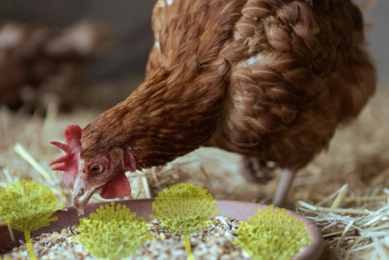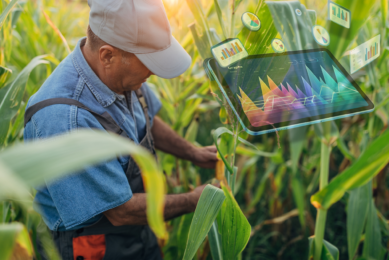Mycotoxin detection methods in livestock feed

Mycotoxin contamination endangers public and animal health and results in major economic losses in the food industry. There is, therefore, an urgent need for rapid, easy and accurate methods of mycotoxin detection in livestock feed.
Mycotoxin levels in feed samples are determined using procedures that involve sample collection and preparation, mycotoxin extraction, clean-up, detection and quantification.
Mycotoxins are not uniformly distributed in commodities which makes collecting representative samples difficult. Although the inconsistency associated with mycotoxin analysis can be reduced by making the sample size larger. The next step is preparing samples by grinding them to a final particle size of around 500 µm, to speed up the chemical reaction process and increase the likelihood of detecting mycotoxins.
Mycotoxin extraction method
Mycotoxin extraction from feed samples is the next step. The choice of extraction and clean-up procedures will be determined by the chemical composition of the mycotoxins, the makeup of the food matrix and the intended detection method.
Extraction using acetonitrile-water is an effective procedure – followed by the induction of liquid-liquid partitioning by adding inorganic salts, followed by dispersive solid phase extraction to remove additional matrix components from the organic phase.
Mycotoxin extraction from solid matrices of varied consistencies is performed using the liquid-solid extraction technique. Pressurised liquid extraction, also known as accelerated solvent extraction, is carried out at a higher temperature and pressure in a pressure-resistant vessel. Supercritical fluid extraction uses supercritical CO2 to reduce or eliminate the need for organic solvents to extract non-polar chemical compounds.
Clean-up techniques
Clean-up techniques are used to reduce matrix impacts, improve the specificity and sensitivity of detection methods and increase measurement accuracy and precision. Immunoaffinity columns and solid phase extraction are effective clean-up methods with a broad spectrum of selectivity. Immunoaffinity columns use monoclonal antibodies to identify specific mycotoxins. In this method mycotoxins can only be absorbed by columns to a certain extent. If the mycotoxin content of a sample exceeds this limit, the mycotoxin cannot be efficiently captured which results in incorrect results. Solid phase extraction involves solid absorbents and captures mycotoxins. However, it is difficult to identify all mycotoxins using a single cartridge.
Mycotoxin detection and quantification
Thin layer chromatography, liquid chromatography, gas chromatography, capillary electrophoresis and immunoassay techniques, such as enzyme-linked immunosorbent assay, lateral flow immunoassay and the fluorescent polarisation method, are used for mycotoxin detection.
Thin layer chromatography technique
Thin layer chromatography is a technique used to separate mixtures of compounds based on differences in polarity. This technique comprises a stationary phase and a mobile phase which allows for the cost-effective qualitative and quantitative analysis of several samples. However, this method is only applicable for soluble mixture components, while humidity and temperature can affect the results.
Liquid chromatography technique
Liquid chromatography methods have been created to overcome some of the disadvantages of thin layer chromatography. In this method a mobile phase and an analytical column are used to separate the high polarity, non-volatile and thermally labile mycotoxins from the matrix components. The most popular detectors used in this method include fluorescent and UV-visible adsorbents. Although aflatoxin and ochratoxin A already have a natural fluorescence and can be found without further testing. This method has several practical concerns, such as the matrix impact, sample preparation and type, and calibration.
Gas chromatography technique
Gas chromatography is a common method used to separate and analyse compounds that can be vaporised without decomposition. Due to the minimal volatility and strong polarity of the analytes, gas chromatography is not often used to analyse mycotoxins. However, volatile mycotoxins, such as trichothecenes and patulin, have been identified and quantified using this technique. Column obstruction, swaying consequences, cross-contamination from previous samples and non-linearity of calibration curves in specific detector types are the main issues with the gas chromatography method.
Capillary electrophoresis
Capillary electrophoresis separates various components according to electrochemical potential. This method is used to detect aflatoxin, zearalenone, deoxynivalenol and ochratoxin A. Capillary electrophoresis produces small amounts of waste, however, this approach has low sensitivity.
Enzyme-linked immunosorbent assay (ELISA)
ELISA is a solid-phase type of enzyme immunoassay which can detect the presence of mycotoxins in livestock feed. ELISA is a quick, easy and precise screening procedure that requires less sample volume and fewer clean-up steps compared to chromatographic techniques. Although with this method the antibodies can react with elements that have a similar chemical composition and give inaccurate results.
Lateral flow immunoassay (LFIA)
Lateral flow immunoassay is a popular, easy to perform and low-cost analytical method to screen for mycotoxins. Commercially available lateral flow immunoassay is available for the identification of ochratoxin A, zearalenone, deoxynivalenol, T-2 toxin and aflatoxin. However, its application in the field is limited due to issues with the sensitivity and dependability of various matrices.
Fluorescent polarisation method
The fluorescence polarisation method is a homogeneous immunoassay useful for rapid and accurate detection of mycotoxins in food products, including zearalenone in corn, deoxynivalenol in wheat-based products, aflatoxin in maize and ochratoxin A in rice. The fluorescence polarisation approach does not require the time-consuming pre-analytical processes. Although this technique has less accuracy and sensitivity than liquid chromatography due to antibodies’ cross-reactivity with food matrix components and other fungal metabolites.
Further research
Mycotoxins are unpredictable pollutants constituting a significant risk to human and animal health and causing financial losses. Various methods, including thin layer chromatography, liquid chromatography, gas chromatography, capillary electrophoresis and immunoassay techniques, such as enzyme-linked immunosorbent assay, lateral flow immunoassay and fluorescent polarisation, are methods used for mycotoxin detection in livestock feed. However, these methods have drawbacks, such as limited applicability, matrix impact, calibration issues, cross contamination, low sensitivity, insufficient accuracy and high cost of analysis. Therefore, further research is needed to improve the sensitivity and accuracy of mycotoxin detection methods in feed.











